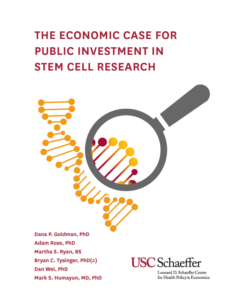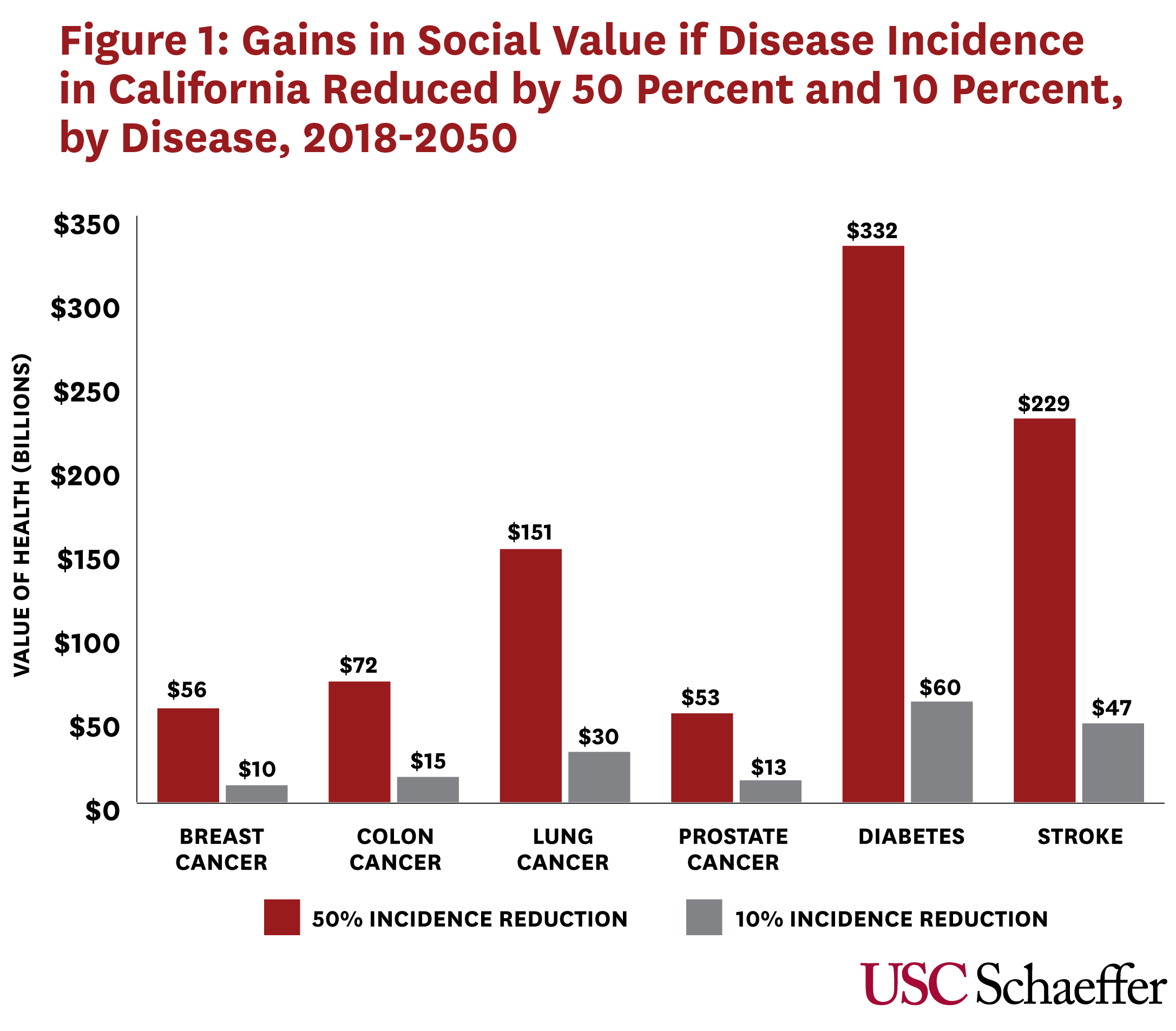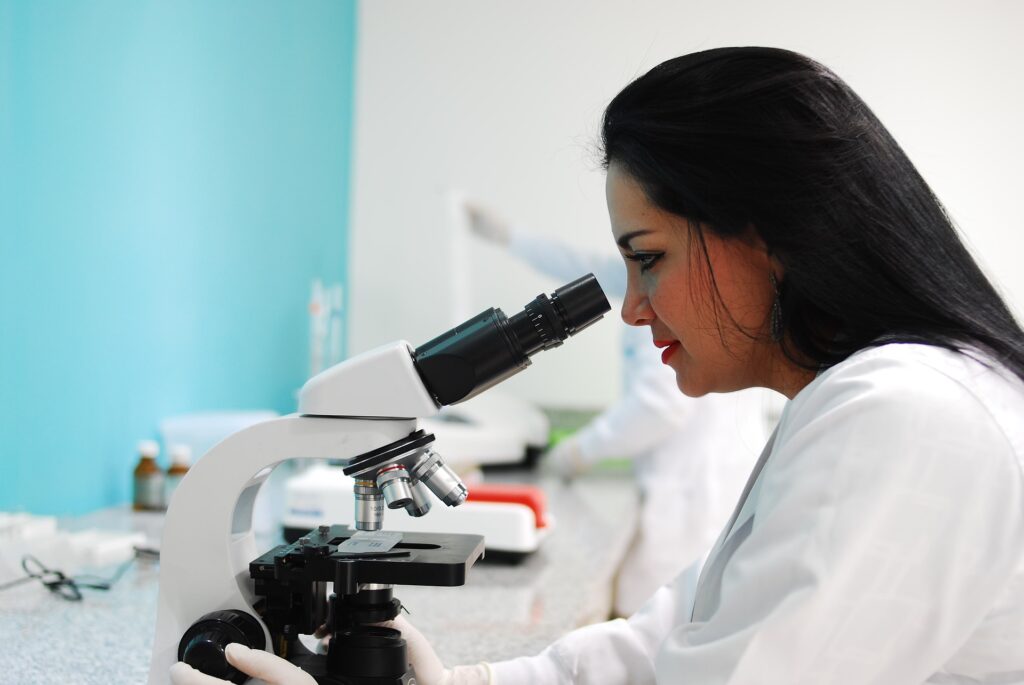Stem cell research holds promise for generating breakthroughs against conditions including Alzheimer’s, cancer, diabetes, heart disease, vision loss—and even COVID-19. Yet this leading-edge science requires significant investment, much of which may need to come from public funding sources.
In 2004, the California Institute for Regenerative Medicine (CIRM) was launched with $3 billion in funding approved by the state’s voters. In the 16 years since, CIRM has funded stem cell research throughout California, promoting basic science as well as the development of numerous potential therapies.
 A new white paper from the USC Schaeffer Center leverages the Future Elderly Model (FEM) to evaluate the economic and health impacts of the CIRM investment. The research team includes USC Schaeffer Center Director Dana Goldman, Senior Fellow Adam Rose, Research Program Specialist Martha S. Ryan, Director of Health Policy Microsimulation Bryan C. Tysinger, USC Price Research Associate Professor Dan Wei and University Professor of Ophthalmology Mark Humayun.
A new white paper from the USC Schaeffer Center leverages the Future Elderly Model (FEM) to evaluate the economic and health impacts of the CIRM investment. The research team includes USC Schaeffer Center Director Dana Goldman, Senior Fellow Adam Rose, Research Program Specialist Martha S. Ryan, Director of Health Policy Microsimulation Bryan C. Tysinger, USC Price Research Associate Professor Dan Wei and University Professor of Ophthalmology Mark Humayun.
Public Funding and Private Investment
One concern raised in debates about public funding is that it crowds out private investment. Citing the example of how government-funded roads would discourage private companies from building railways nearby, the white paper’s authors explain how stem lines differ from rail lines.
“Scientific discovery is a fundamentally risky process,” they write, “and some of the basic research is so risky that the private sector will often not undertake it.” Unlike construction projects that use time-honored technology to fulfill defined objectives for paying customers, the ultimate effectiveness of new clinical pathways is harder to predict.
Once high-risk projects demonstrate definite potential, the profit-minded private sector will be motivated to step up, the authors say. For projects taking root from public seed funding, the payoffs can be significant. Previous studies have shown that each dollar invested into basic research produces an additional $8.38 in industry investments for research and development over eight years, while a similar investment in clinical research more than doubles its value in three years.
Likewise, public investment in CIRM spurs private spending and economic benefits, according to Goldman and his colleagues. Their analysis showed that CIRM funding has generated more than 56,000 high-paying jobs and added nearly $10 billion to California’s economy—more than three times the state’s initial investment. CIRM’s stimulation of the state’s biotechnology sector has been profound, and its positive financial impact reverberates nationwide.
Therapeutic Advances
Economic advantages are undeniably important, but CIRM must ultimately be judged by its ability to foster effective therapies. Although it is too early to know the outcomes, the authors note that four CIRM-funded projects have reached phase III clinical trials in human patients. These include promising new therapies for kidney failure and amyotrophic lateral sclerosis (ALS).
To estimate the value of CIRM’s influence on stem cell innovation, the team employed the leading-edge microsimulation FEM, which follows a representative population sample over time to predict how policy shifts, technological advances and other changes will affect health and the economy.
Using diabetes as an example, they observe that a new therapy that halves rates of the disease among Californians age 51 and older “translates to a $332 billion gain between 2018 and 2050 in social value.” (Figure 1) Even a relatively modest decline of 10% in diabetes incidence would yield a social value of $60 billion over the same time frame.

CIRM also has devoted considerable resources to promising therapies for cancer. The authors estimate the potential gains from a 50% decrease in breast cancer could be $56 billion in California alone from 2018 to 2050. The same decline in lung cancer would garner a societal benefit of $151 billion, while similar reductions in colon and prostate cancers would result in respective savings of $72 billion and $53 billion.
“These potential benefits are so large that it demonstrates strong expected return—even if the likelihood of success is very low” for any particular project, the authors say.
Continuing the Experiment
Although critics suggest that the institute has failed to live up to its promise, CIRM has returned results, the researchers found. Not only has CIRM boosted California’s economy and tax base, but it has also provided vital seed funding for global medical progress.
Granted, no therapy developed with CIRM funding has come to market. However, drug development takes time, and a number of CIRM-funded therapies show considerable promise in combating intractable diseases.
The authors note that society’s historical lack of investment in human health has strained public resources. With CIRM, the state is investing in research that has significant potential for improving health as well as generating economic returns.
This white paper was funded by the USC Schaeffer Center, and builds on previous reports funded by CIRM.

You must be logged in to post a comment.